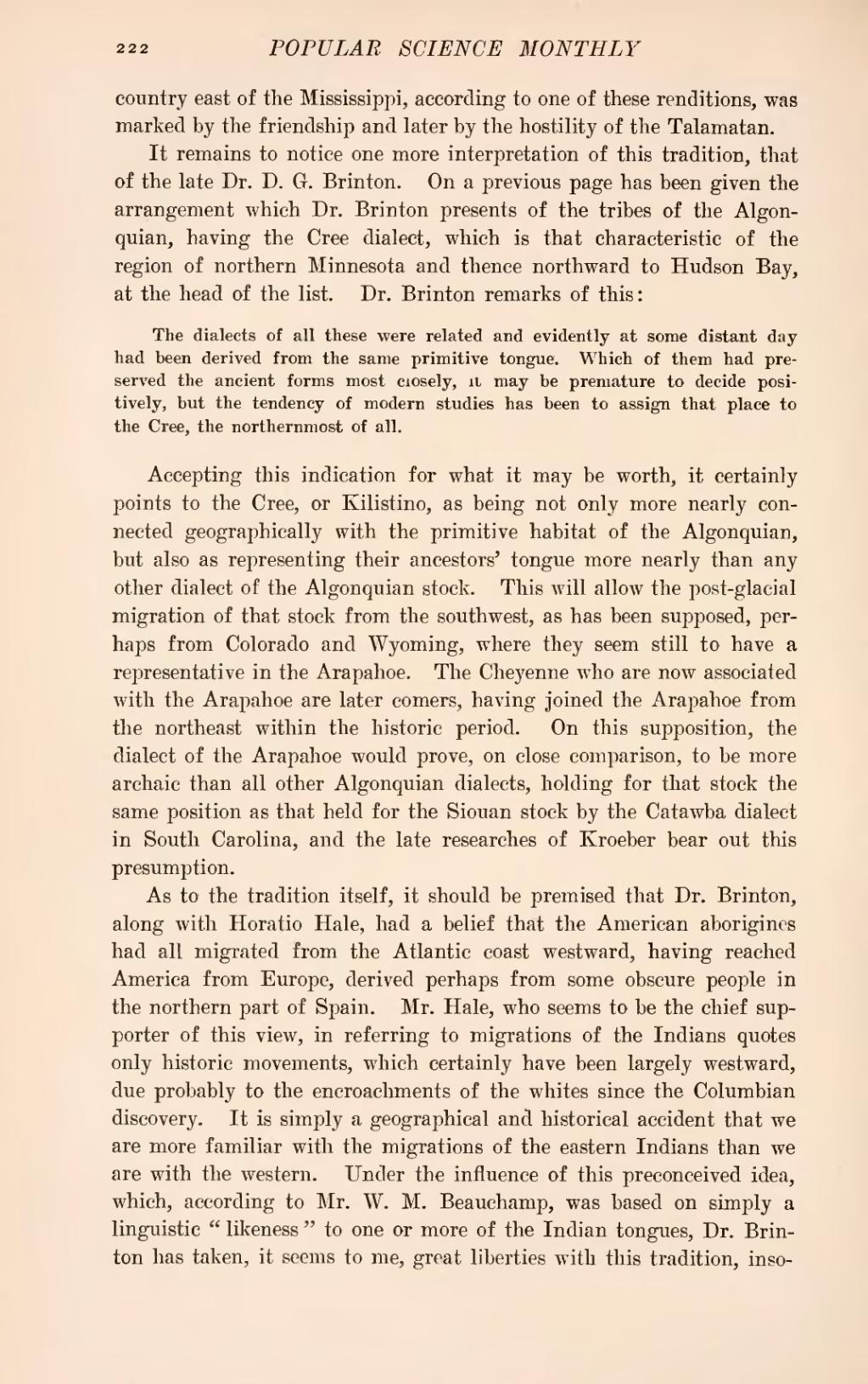country east of the Mississippi, according to one of these renditions, was marked by the friendship and later by the hostility of the Talamatan.
It remains to notice one more interpretation of this tradition, that of the late Dr. D. G. Brinton. On a previous page has been given the arrangement which Dr. Brinton presents of the tribes of the Algonquian, having the Cree dialect, which is that characteristic of the region of northern Minnesota and thence northward to Hudson Bay, at the head of the list. Dr. Brinton remarks of this:
Accepting this indication for what it may be worth, it certainly points to the Cree, or Kilistino, as being not only more nearly connected geographically with the primitive habitat of the Algonquian, but also as representing their ancestors' tongue more nearly than any other dialect of the Algonquian stock. This will allow the post-glacial migration of that stock from the southwest, as has been supposed, perhaps from Colorado and Wyoming, where they seem still to have a representative in the Arapahoe. The Cheyenne who are now associated with the Arapahoe are later comers, having joined the Arapahoe from the northeast within the historic period. On this supposition, the dialect of the Arapahoe would prove, on close comparison, to be more archaic than all other Algonquian dialects, holding for that stock the same position as that held for the Siouan stock by the Catawba dialect in South Carolina, and the late researches of Kroeber bear out this presumption.
As to the tradition itself, it should be premised that Dr. Brinton, along with Horatio Hale, had a belief that the American aborigines had all migrated from the Atlantic coast westward, having reached America from Europe, derived perhaps from some obscure people in the northern part of Spain. Mr. Hale, who seems to be the chief supporter of this view, in referring to migrations of the Indians quotes only historic movements, which certainly have been largely westward, due probably to the encroachments of the whites since the Columbian discovery. It is simply a geographical and historical accident that we are more familiar with the migrations of the eastern Indians than we are with the western. Under the influence of this preconceived idea, which, according to Mr. W. M. Beauchamp, was based on simply a linguistic "likeness" to one or more of the Indian tongues, Dr. Brinton has taken, it seems to me, great liberties with this tradition, inso-
